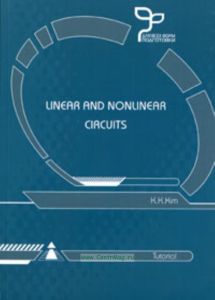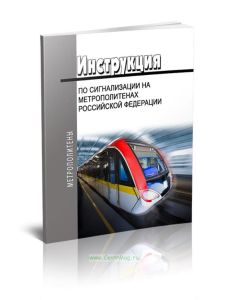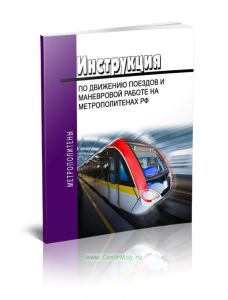- Артикул:00473269
- Автор: Ким К.К.
- ISBN: 978-5-9994-0118-2
- Обложка: Мягкая обложка
- Издательство: УМЦ ЖДТ (все книги издательства)
- Город: Москва
- Страниц: 200
- Формат: 60x84/16 (~143х205 мм)
- Год: 2011
- Вес: 245 г
Линейные и нелинейные цепи. Linear and Nonlinear Circuits: Tutorial. (на английском языке)
Учебное пособие, написанное на английском языке, составлено в соответствии с программой курса "Теоретические основы электротехники" и предназначено для студентов электромеханических и электротехнических специальностей.
В пособии рассматриваются аспекты синтеза электрических цепей с сосредоточенными параметрами, теории электрических цепей с распределенными параметрами и некоторые вопросы теории нелинейных электрических и магнитных цепей. Данное учебное пособие является продолжением книги К.К. Кима "Линейные электрические цепи", изданной в 2006 году.
The course "Theoretical Fundamentals of Electrical Engineering* consists of the theory of electrical and magnetic circuits and the theory of electromagnetic fields. This course (according to the curriculum) is taught during three semesters.
The synthesis of electric circuits with lumped parameters, the aspects of the theory of electrical circuits with distributed parameters and some problems of the theory of nonlinear electrical and magnetic circuits are considered in this tutorial.
The tutorial is done for students of electrical, electronic, control, communication, information, instrumentation and computer engineering specialties.
There are calculation hometasks which are given to the students at the end of the tutorial. There is also a list of the recommended literature for the students.
Содержание
1. SYNTHESIS OF LINEAR PASSIVE ELECTRICAL CIRCUITS WITH LUMPED PARAMETERS
1.1. The properties of input functions of passive electrical circuits (two-pole networks)
1.2. The representation of input functions of two-pole networks as simple fractions (Foster's method)
1.3. The realization of input functions of a two-pole network with real and imaginary roots of the denominator (Foster's method)
1.4. The realization of input functions of a two-pole network having only imaginary roots of the denominator
1.5. The realization of the input function having complex roots of the denominator
2. ELECTRICAL CIRCUITS WITH DISTRIBUTED PARAMETERS (THE STEADY REGIME)
2.1. Electrical circuits with distributed parameters
2.2. The equations of a line with distributed parameters
2.3. Solving equations of an uniform line (the steady sine wave regime)
2.4. Running waves
2.5. Characteristics of a uniform line. Conditions for an undistorting line
2.6. An uniform line at various working regimes
2.7. Working regimes of a loss-free line
3. TRANSIENTS IN CIRCUITS WITH DISTRIBUTED PARAMETERS
3.1. Transients in an uniform undistorting line (the classical method of calculation)
3.2. Transients in an uniform undistorting line (the operational method of calculation)
3.3. Refraction and reflection of waves at the position of joint of two uniform lines
3.4. Reflection of waves from the end of a line
3.5. Switching-on an uniform line
3.6. A case when there is an inductive coil at the position of joint of two uniform lines
3.7. A case when there is an active resistance at the position of joint of two uniform lines
4. NONLINEAR CIRCUITS OF A DIRECT CURRENT
4.1. Nonlinear elements and their characteristics
4.2. Current-voltage characteristics of some nonlinear elements
4.3. The calculation of simple circuits with passive nonlinear elements
4.4. The calculation of simple nonlinear circuits of a direct current by the iterative method
5. LINEAR AND NONLINEAR MAGNETIC CIRCUITS OF A DIRECT CURRENT
5.1. The connection between a magnetic field and an electrical current. Biot-Savart-Laplac's law. Ampere's circuital law
5.2. Laws and parameters of magnetic circuits
5.3. The characteristics of magnetizing ferromagnetics
5.4. Calculation of nonlinear magnetic circuits
5.5. About the calculation of a permanent magnet
6. NONLINEAR ELECTRICAL AND MAGNETIC CIRCUITS IN PERIODIC PROCESSES
6.1. Features of periodic processes in nonlinear circuits
6.2. The method of equivalent sinusoids
6.3. Losses in a ferromagnetic core at the periodic changing of the magnetic
flux
6.4. The equation and the equivalent circuit of a coil with a ferromagnetic core
6.5. Complex reluctance
6.6. Ferroresonance at series connecting a coil with a ferromagnetic core
and a capacitor
6.7. Ferroresonance at connecting a coil with a ferromagnetic core and
a capacitor in parallel
6.8. Controlled inductive elements. The ferromagnetic amplifier of power
7. OSCILATIONS IN NONLINEAR CIRCUITS
7.1. The theory of stability of regimes in nonlinear electrical circuits
7.2. Autooscillation circuits
7.2.1. General conceptions
7.2.2. Theory of active oscillators with an external feedback
7.2.3. Active oscillators with an internal feedback
7.3. The relaxation oscillations
8. CALCULATION OF TRANSIENTS IN NONLINEAR CIRCUITS
8.1. The graphic method of calculating transients
8.2. The method of step-by-step intervals (Eiler's method)
8.3. The method of calculating transients in a nonlinear circuit based on the conditional linearization of the circuit equation
8.4. The method of piecewise-linear approximation
REFERENCES
Appendix 1. The hometask "The calculation of transients in lines with distributed parameters
Appendix 2. The hometask "The calculation of a nonlinear magnetic circuit
Appendix 3. The hometask "The calculation of transients in the nonlinear electrical circuit
A.3.1. The hometask "The calculation of a transient in the circuit, containing a nonlinear resistance
A.3.2. The hometask "The calculation of a transient in the circuit, containing a nonlinear inductance
A.3.3. The hometask "The calculation of a transient ih the circuit, containing a nonlinear capacitance -
Appendix 4. The questionnaire
A.4.1. The main conceptions. The laws of electrical circuits
A.4.2. The properties and methods of calculating linear circuits of a direct current
A.4.3. The properties and methods of calculating circuits of a sine-wave current
A.4.4. The fundamentals of the complex method of calculating circuits of a sine-wave current
A.4.5. The inductively coupled circuits
A.4.6. The three-phase circuits
A.4.7. The linear electrical circuits of a non-sine-wave current
A.4.8. The resonance phenomena in electrical circuits and the frequency characteristics
A.4.9. The two-port networks
A.4.10. The transients in linear electrical circuits
A.4.11. The elements of synthesis of linear circuits with the lumped parameters
A.4.12. The circuits with the distributed parameters in the steady regimes
A.4.13. The transients in circuits with the distributed parameters ....
A.4.14. The nonlinear electrical and magnetic circuits
A.4.15. The autooscillations in nonlinear electrical circuits
A.4.16. The transients in nonlinear electrical circuits
The answers
Рекомендуем
Артикул 00-01014930







